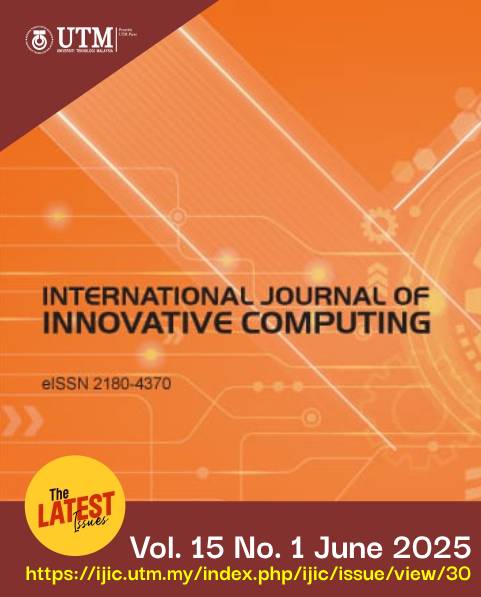Metaheuristic Optimization Techniques for Localization in Outdoor Wireless Sensor Networks: A Comprehensive Review
DOI:
https://doi.org/10.11113/ijic.v15n1.454Keywords:
Wireless Sensor Networks, Ranging Model, RSSI, Optimization Techniques, Localization Techniques, Measurement influencing factorsAbstract
During the last two decades, Wireless Sensor Networks (WSNs) have attracted significant attention from researchers and sensor manufacturing companies alike. WSNs find applications in various environmental monitoring tasks such as weather monitoring, temperature observation, humidity measurement, and military surveillance. These networks typically consist of hundreds to thousands of sensor nodes deployed across the target area. Each sensor node is responsible for collecting specific data and transmitting it to the processing center. However, several constraints, including power consumption, energy-saving measures, and deployment costs, limit the functionality of sensor nodes. Additionally, the accuracy of transmitted data is influenced by the surrounding environment. This paper provides an overview of localization algorithms, including centralized and distributed algorithms. It also delves into distance measurement techniques such as Time of Arrival (ToA), Time Difference of Arrival (TDoA), Angle of Arrival (AoA), and Received Signal Strength Indicator (RSSI). Methodologies of localization, such as range-based and range-free approaches, are discussed, along with various range-based localization techniques like Sum-Dist-Min-Max, Bounding box, geometric methods, and general techniques. The paper also examines influencing factors such as noise, path loss, propagation model, connectivity, and device limitations and their impact on localization measurements. The primary objective of this paper is to review localization algorithms based on metaheuristic optimization techniques to improve localization accuracy. This paper serves as a comprehensive background on localization algorithms and methods used in wireless sensor networks, offering insights for researchers to develop efficient localization algorithms tailored to specific application requirements in diverse work environments.
















